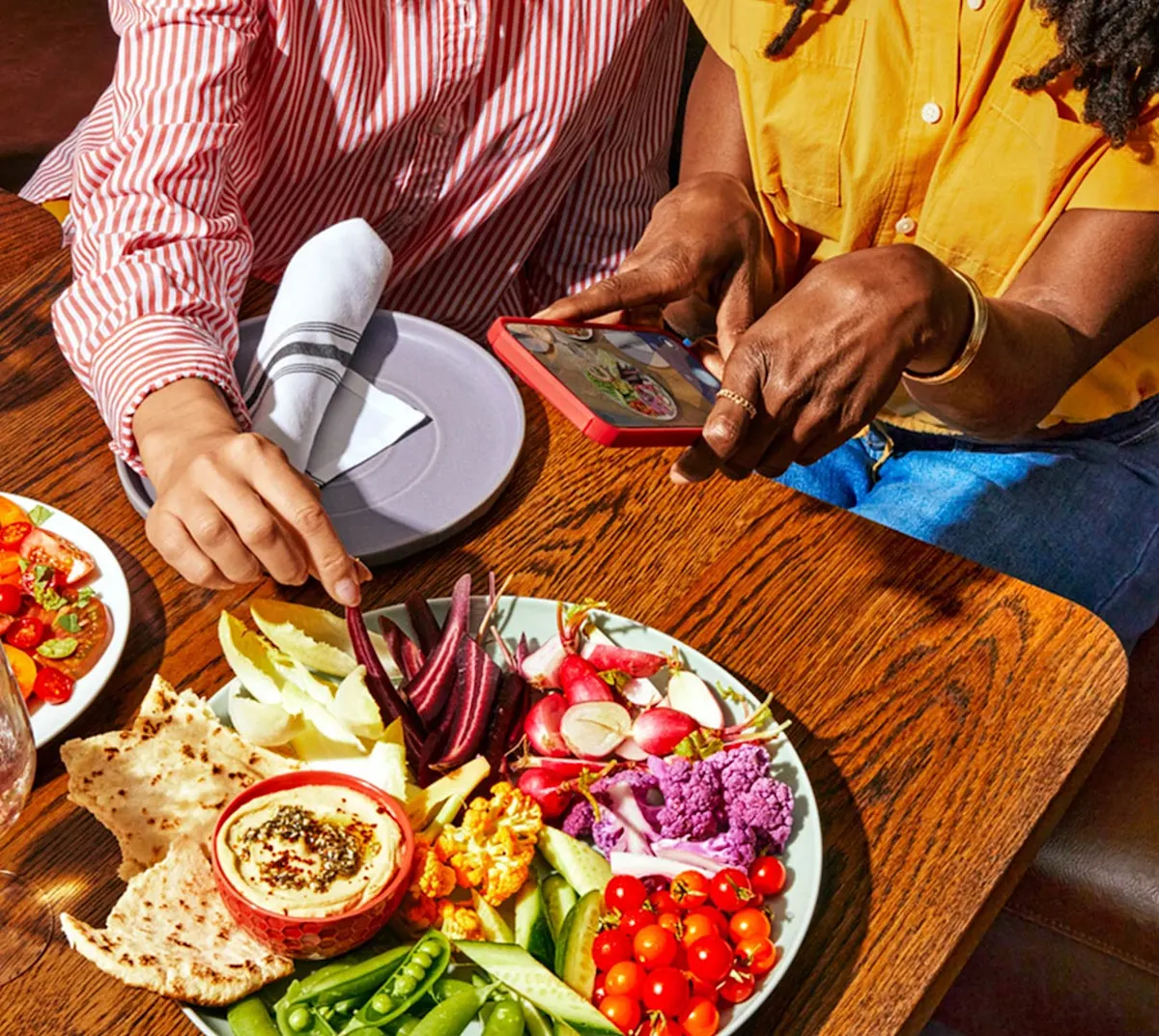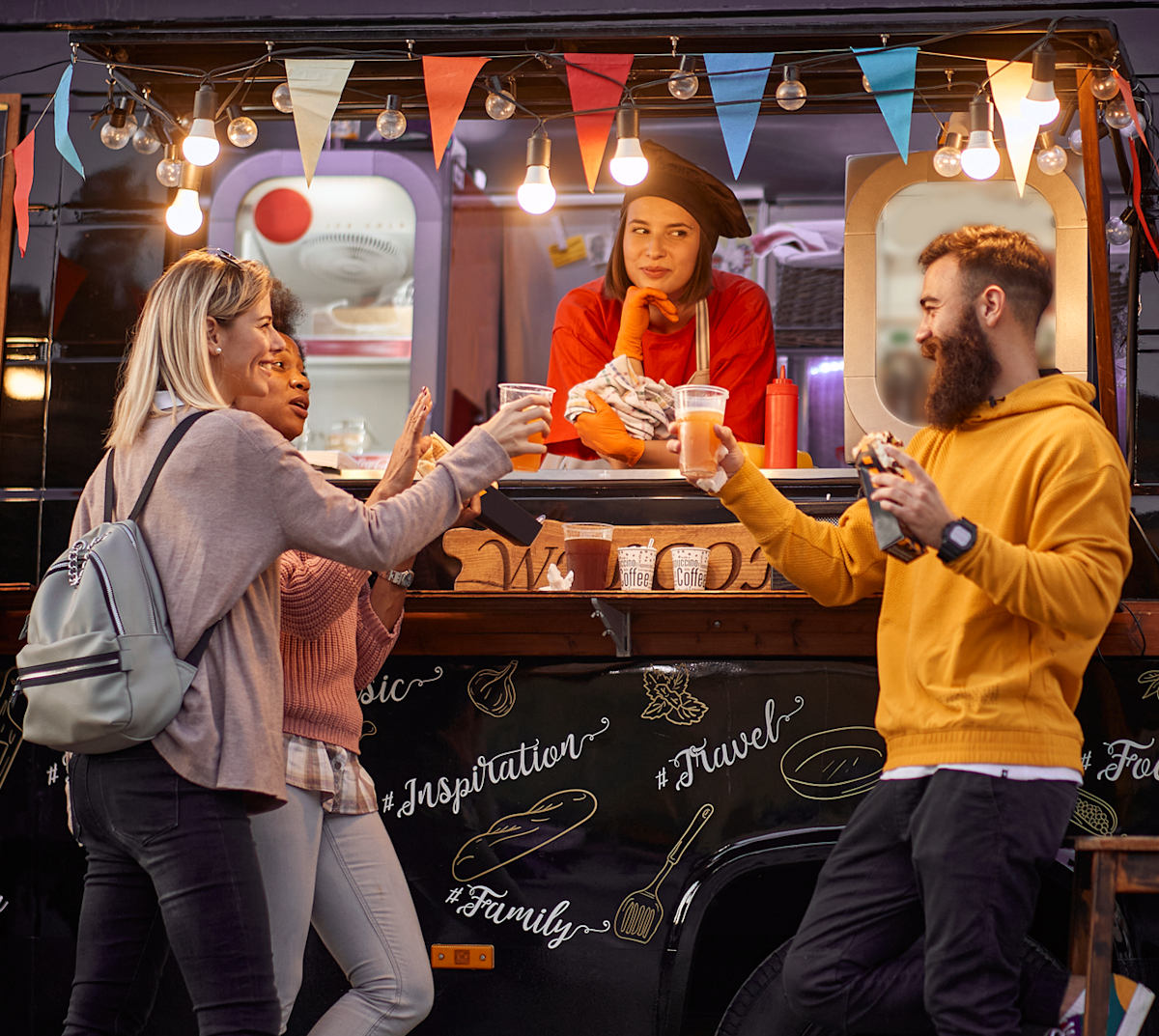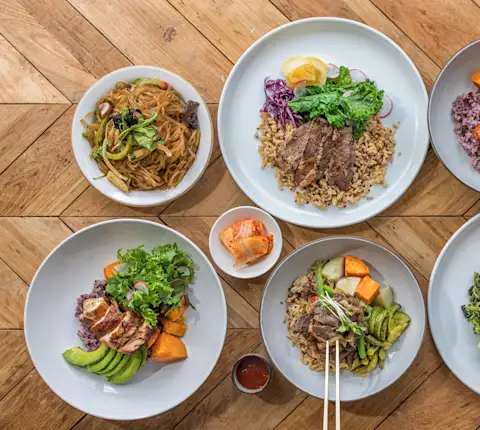Today's diners look for more than just a delicious meal or exceptional service. They're after immersive dining experiences that blend ambiance, interactivity, and storytelling. In other words, they're looking for experiential dining. As consumer preferences shift, restaurants are evolving their offerings to deliver experiences that leave lasting impressions. Here's what the future of experiential dining looks like and how to attract modern diners with unique restaurant experiences.
What is experiential dining?
Experiential dining turns regular meals into unique adventures by engaging guests' senses, emotions, and imagination. It's a departure from traditional restaurant service, offering elements like immersive environments, interactive presentations, and ways for guests to participate in the action.
What sets it apart is its complexity. It's not just a menu and a table; it's a carefully orchestrated production that combines atmosphere, interactivity, and often a touch of the unexpected. Think cat cafes where you can sip a latte surrounded by kittens or dining in complete darkness. Themed pop-ups like a "1920s speakeasy" create a complete environment where diners feel transported to another time and place. Chef-led tasting menus, on the other hand, focus on storytelling, with the chef introducing each course and sharing its inspiration. Even smaller touches, like latte art at your favorite breakfast cafe or lunch spot, can turn a coffee into a canvas and elevate the customer experience. The goal is to deliver moments worth savoring — and sharing.
The restaurant trends shaping the future of experiential dining
Consumers today value experiences over things, especially Gen Z and millennials. Like travel, dining out has become an important driver of the experience economy. And just as people want to share vacation content on social media, they want to capture special moments from their unique dining experiences with friends and family.
In fact, a recent OpenTable survey found that 87% of diners say they have visited a restaurant because they found it on social media. Diners today want to capture and share photogenic content from their meals on social media platforms like Instagram and TikTok. Restaurant content is catnip for the grid, from colorful, over-the-top desserts to theatrically presented dishes to live performances. Shareable dishes or experiences not only delight guests, they also double as free online advertising for restaurant owners.
Another shift in consumer behavior? A wider range of dietary restrictions and preferences. Whether they're dining in-house or ordering delivery from their favorite local restaurant, today's diners want more healthy takeout options, meat-free alternatives, or gluten-free dishes. A DoorDash menu study found that customization can attract a more comprehensive range of customers who wish to tailor orders to their needs.
To respond to these new preferences, allow — and even encourage — customers to customize orders. This includes but is by no means limited to offering dairy-free dishes, gluten-free options, or meat-free substitutes. In 2024, Prezzo conducted a study revealing that 86% of Gen Z adults experience "menu anxiety" — or a fear of choosing the wrong option — and struggle with decision fatigue while browsing one-size-fits-all menus that fail to address diverse dietary needs and preferences. Read our guide to designing a diverse and inclusive menu for more tips.
The evolution of experiential dining
Experiential dining has evolved over time. In the 1950s and '60s, early examples of themed restaurants like tiki bars and diners designed as train cars created whimsical, memorable environments for guests.
The rise of molecular gastronomy in the 21st century brought science into the kitchen, with superstar chefs like Ferran Adrià of El Bulli and Heston Blumenthal of Fat Duck pushing the boundaries of what food and the restaurant experience could be. Diners weren't just eating, but marveling at creative or even surreal concepts like edible foam or dishes that changed flavor mid-bite.
More recently, advanced technology has sparked a new wave of multi-sensory dining around the world. Ultraviolet in Shanghai, for example, uses projections, music, and scent to complement their dishes, for a multi-sensory environment that isn't easily replicated. At its best, experiential dining elevates the everyday meal to unforgettable new heights, keeping customers engaged and coming back.
How restaurants are embracing experiential dining
By combining creativity, innovation, and a dash of theatrics, restaurants around the world are transforming dining out into an unforgettable experience. From immersive environments to interactive menus, these experiences go beyond the plate, offering something that lingers in diners' minds — and TikTok feeds — long after they've paid the check. Here's how some of the most forward-thinking restaurants are embracing experiential dining.
Immersive environments
Experiential dining brings diners into another world through powerful storytelling. At Medieval Times, guests are transported to the Middle Ages with live jousting tournaments and falconry while dining in a castle — sans silverware. At Ithaa, the world's first underwater restaurant in the Maldives, diners eat while surrounded by marine life.
Interactive dining
Modern diners want to be part of the action. Restaurants are adding interactive touches like build-your-own taco bars, personalized omakase sushi experiences, or DIY s'mores stations that turn the meal into an engaging activity. At places like the Malibu Barbie Café in New York, customers can take photos inside a life-size Barbie Box for the perfect social media moment.
Theatrical presentations
Restaurants are leaning into theatrics to make dining feel like a performance. At Mila in Miami, for example, live dance performances create an exciting ambiance. Ellen's Stardust Diner in New York features a 1950s theme and singing servers. These experiences heighten anticipation, delight diners, and create shareable moments that feel larger than life.
Themed places
From Harry Potter-inspired eateries to retro '80s diners, themed restaurants are having a moment. In Las Vegas, for example, the theatre company Spiegelworld opened the psychedelia-themed restaurant Superfrico, complete with inventive cocktails, otherwordly decor, kooky costumes, and live shows. These experiences help transport diners to another world, where novelty or nostalgia provides a sense of escapism.
Multi-sensory experiences
Restaurants are designing multi-sensory experiences incorporating temperature, light, scent, and even sound to complement their dishes. At Dining in the Dark events in over 80 cities around the world, including Chicago and Los Angeles, guests enjoy a three-course blindfolded, heightening their other senses and offering a deeper appreciation for flavor and texture.
The future of experiential dining
The future of experiential dining is as much about innovation as it is about connection. Emerging trends and technologies will spur a range of creative and diverse concepts that emphasize sustainability and personalization. Here's where immersive dining is heading and learn how to stay ahead of the curve:
Immersive sustainability
Diners are becoming more eco-conscious than ever, which means they're looking for dining experiences that connect them to the environment. The rise of farm-to-fork dining involves diners in the journey of ingredients, from participating in foraging to learning about closed-loop composting. Expect to see more zero-waste menus and meals or immersive agriculture experiences.
Enhanced personalization
Interactive technology will allow restaurants to tailor experiences to individual preferences, from interactive menus to customizable music and lighting. Here's how incorporating restaurant technology will ensure a great customer experience and help your business stand out.
Smart dining rooms
Smart technology will revolutionize experiential dining by enhancing interactivity, personalization, and sensory engagement. Augmented reality can add visual storytelling to dishes, allowing people to mix and match ingredients or toppings to see their final dish. Smart tables with touchscreens allow diners to customize their experience, and app integrations streamline ordering, payments, and immersive digital elements. Virtual reality transports diners to faraway wineries, restaurants, or unique locations from the comfort of their home.
Attract modern diners with unique restaurant experiences
Traditional restaurants don't need to overhaul their businesses to offer these unique experiences. But it might be helpful for restaurant owners to stay on top of emerging trends and incorporate certain elements of immersive dining to create memorable and shareable moments.
To explore how your restaurant can keep customers happy both in-house and off-premise, check out how restaurants can bring hospitality to off-premise dining and how digital payment solutions can improve the in-store experience.



